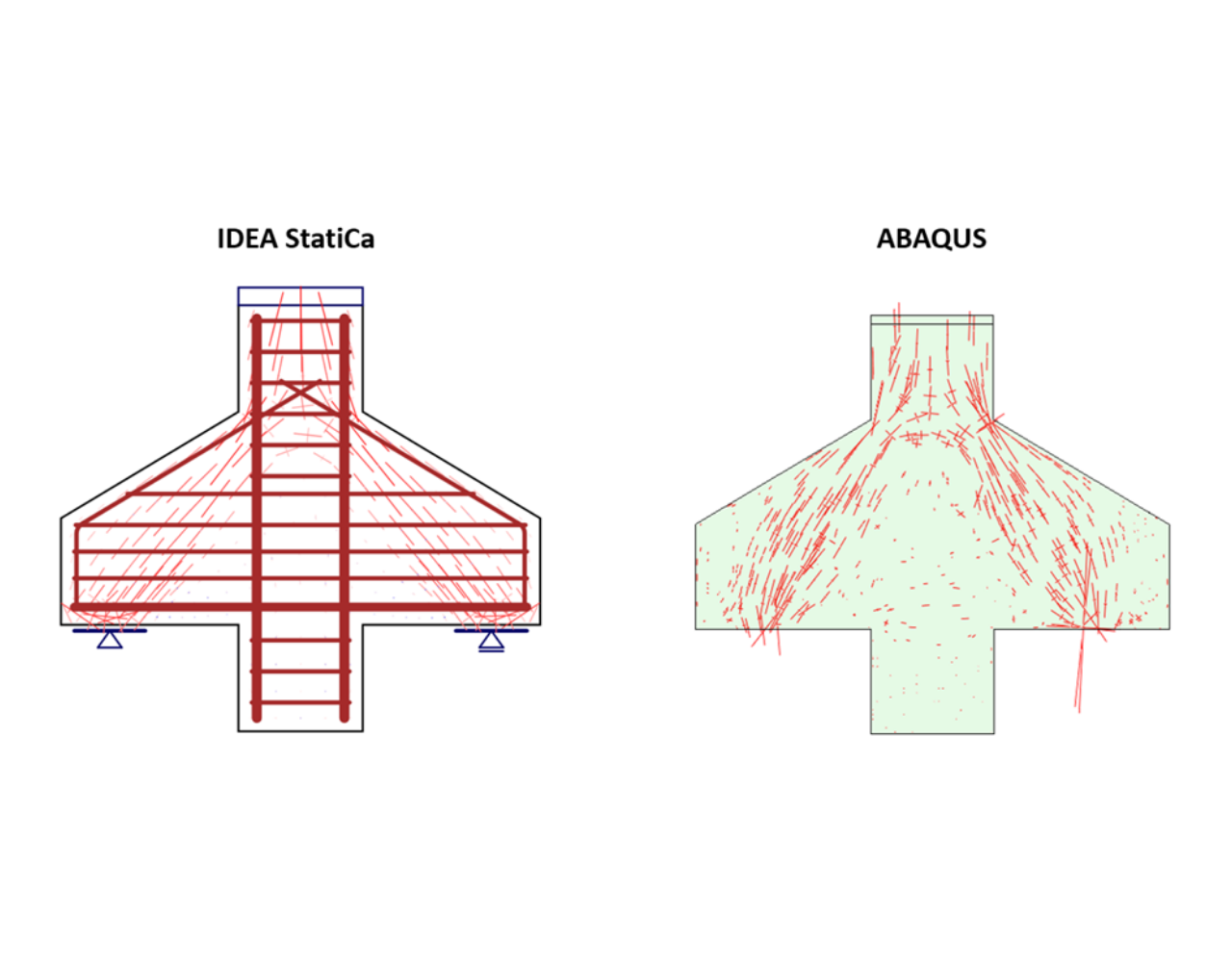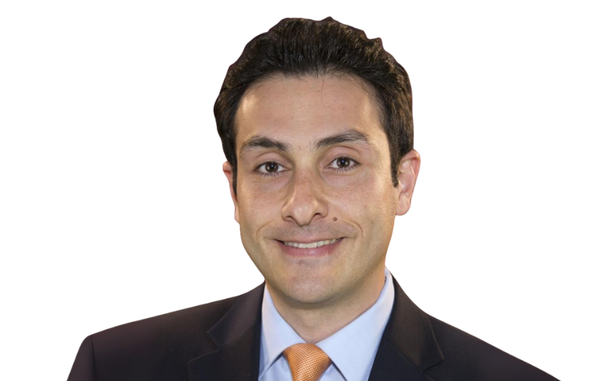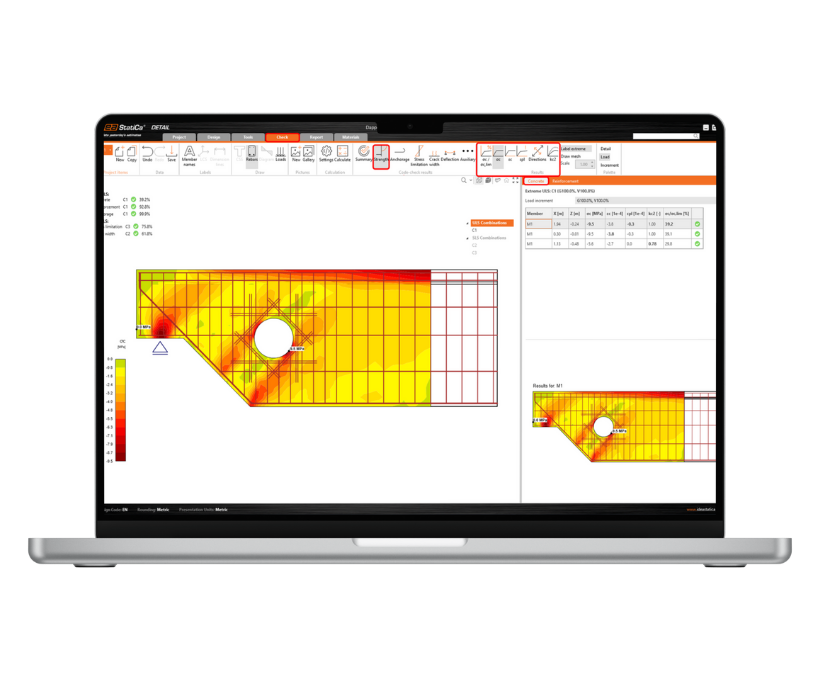
Reinforced Concrete Members with Discontinuities
The Ohio State University research confirms the Compatible Stress Field Method to validate reinforced concrete design, where traditional methods such as the Strut-and-Tie Model fall short.
Verification project
- Four concrete members with discontinuities were created and examined against baseline calculations and experimental data.
- Design checks were performed according to ACI 318-19 and AASHTO LRFD
- Compatible Stress Field Method (CSFM) results compared with traditional strut and tie methods (STM) as well as the FEA approach (ABAQUS).
- Verification studies provide a comprehensive understanding of the behavior of reinforced concrete members with discontinuities
- All results correlate very well with ACI, with minor differences under 10% of the experimental data

Deep Beam
- 5 reinforced concrete deep beam specimens investigated
- Comparing the strength and deformation capacities resulting from CSFM with strut and tie methods (STM) defined by ACI 318-05 and ACI 318-19
- Load deflection, principal stress distribution and crack patterns examined against ABAQUS
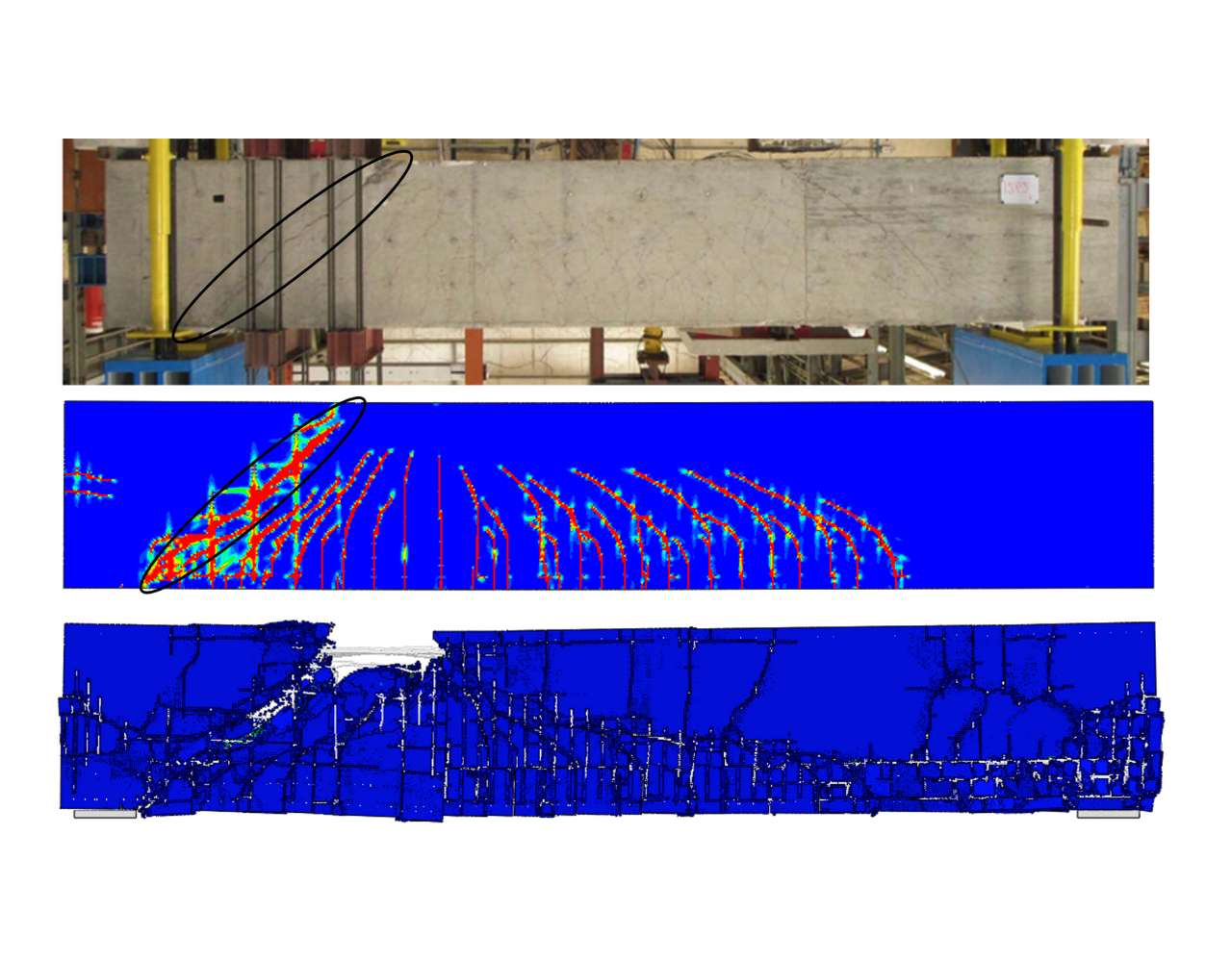
Walking Column
- Investigating 4 specimens of a walking column
- Assessment of CSFM vertical load capacities compared with design capacities from the STM
- Load-bearing capacity, principal stress distribution, and crack patterns were determined and compared using the CSFM and ACI 318-19 design procedures.

Shear Walls with Openings
- 4 specimens of shear walls with openings were examined
- Evaluating load capacity and drift angle compared to experimental data
- Calculate design capacities with the Strut and Tie model
- Comparative analysis with ABAQUS on principal stress distribution, drift angle and crack patterns
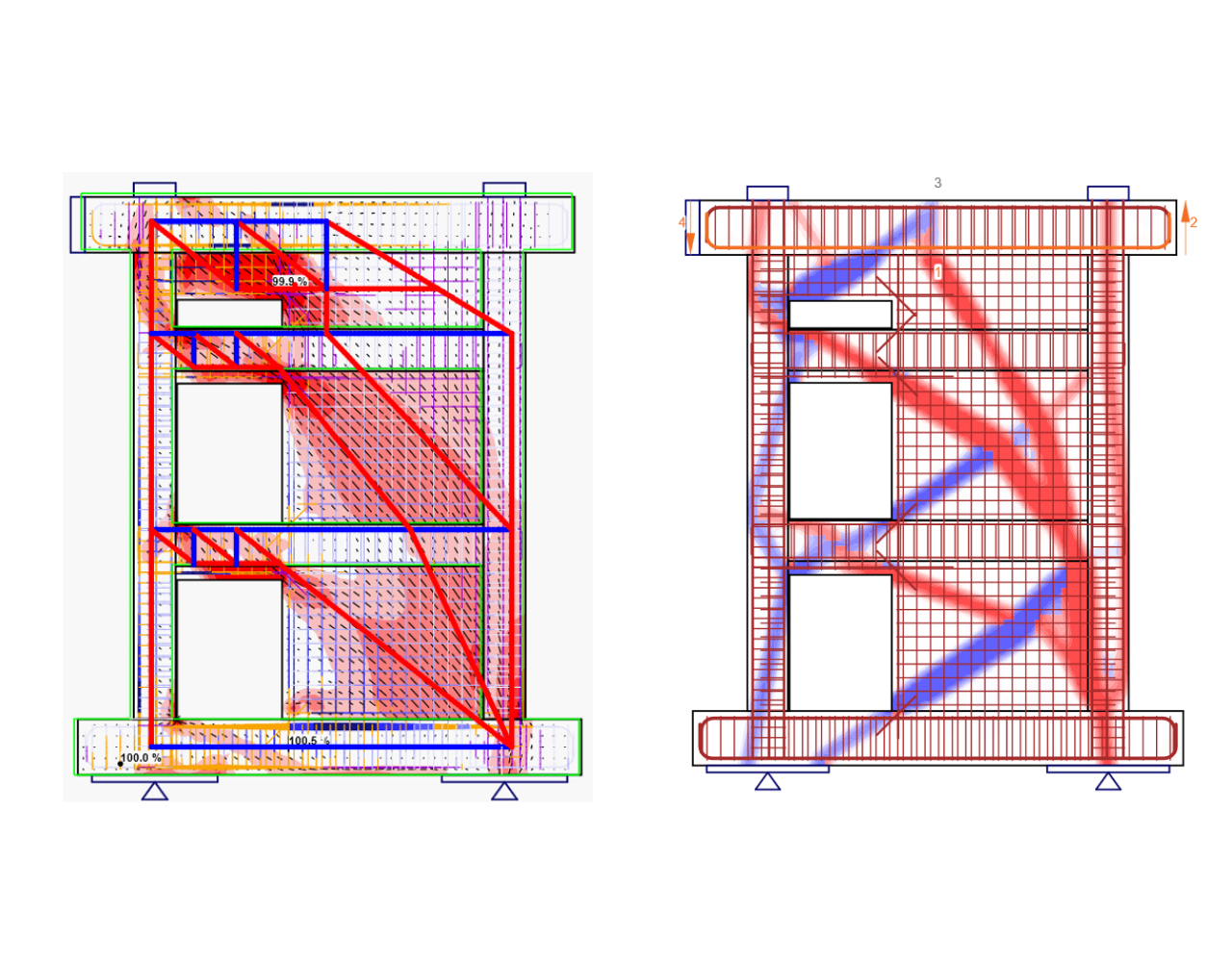
Corbel
- 7 reinforced concrete corbel specimens investigated
- Comparing CSFM with design capacities using the ACI-318-19 and AASHTO LRFD
- Testing deflection, principal stress distribution, and crack patterns against ABAQUS models
- Exploring the influence of secondary reinforcement on corbel capacities
